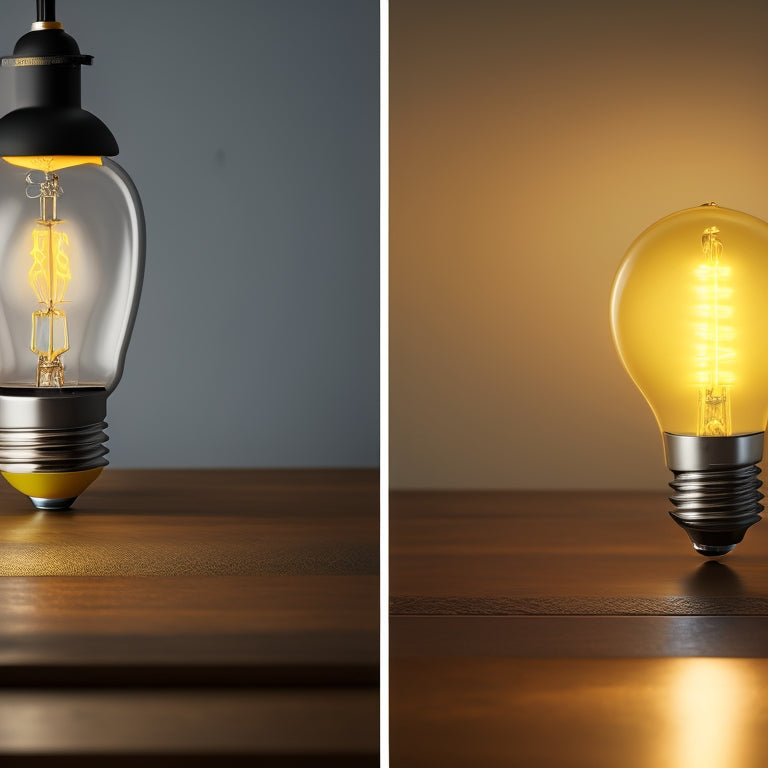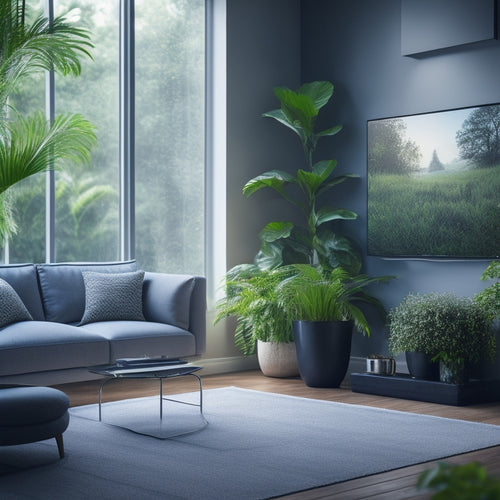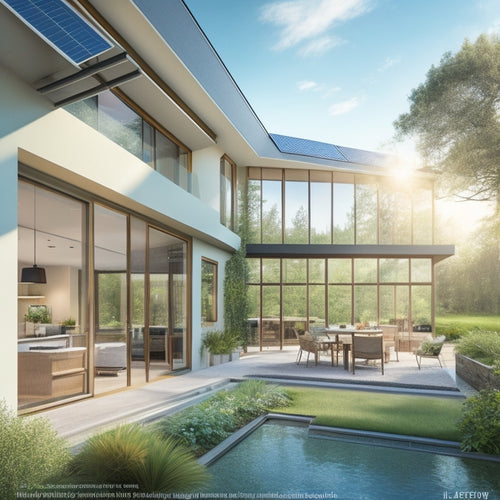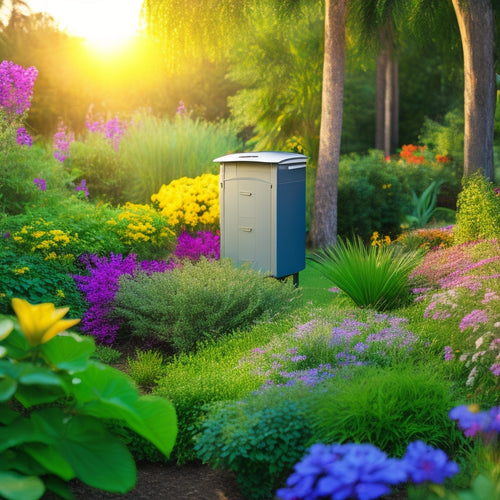
LED Vs Traditional: Illuminating Energy-Efficient Home Choices
Share
You're likely considering upgrading to LED lighting, and rightly so, as LEDs use up to 90% less energy than traditional incandescent bulbs, greatly reducing your energy bills and carbon footprint. With a lifespan of 15,000 to 25,000 hours, LEDs last up to 15 times longer than traditional bulbs, saving you time and money on frequent replacements. As you investigate the benefits of LED lighting, you'll realize the impact of reduced greenhouse gas emissions, waste reduction, and long-term savings on your energy bills, giving you a clearer illustration of how to make the most energy-efficient choices for your home.
Key Takeaways
- LEDs use up to 90% less energy than traditional incandescent bulbs, significantly reducing energy bills and carbon footprints.
- LEDs last 15 times longer than traditional bulbs, reducing frequent replacements and waste generation.
- LED adoption can lead to an estimated $30 billion savings in electricity costs by 2035, with average annual savings of $225 per household.
- LEDs offer adjustable brightness and color temperature options, enhancing user control over lighting without sacrificing energy efficiency.
- By choosing LEDs, homeowners can promote a more sustainable future, minimizing environmental impact and supporting eco-friendly practices.
Energy Efficiency Compared
When it comes to energy efficiency, traditional home lighting options, such as incandescent and halogen bulbs, simply can't hold a candle to LEDs.
You'll find that LEDs outperform these traditional options in a performance comparison, using considerably less energy to produce the same amount of light. In fact, LEDs use up to 90% less energy consumption compared to incandescent bulbs.
This means you'll not only reduce your energy bills but also minimize your carbon footprint, much like solar-powered EV charging reduces carbon footprint and grid reliance.
By leveraging energy-efficient solutions, we can optimize our energy usage and promote a more sustainable future.
By switching to LEDs, you'll enjoy the freedom to live more sustainably without sacrificing lighting quality.
With LEDs, you can have it all: energy efficiency, cost savings, and a clearer conscience.
Lifespan and Durability
As you consider the pros and cons of LED and traditional home lighting options, the significant difference in their lifespan and durability becomes apparent.
LEDs have an impressive lifetime expectation of 15,000 to 25,000 hours or more, depending on the material quality and operating conditions. In contrast, traditional lighting options typically last between 1,000 to 2,000 hours. This means LEDs can last up to 15 times longer than traditional lights, reducing the need for frequent replacements and minimizing waste.
With the increasing adoption of eco-friendly alternatives, understanding electric car benefits can also guide our choices in home lighting.
The superior durability of LEDs is due to their sturdy design and high-quality materials, which can withstand environmental stressors and resist degradation.
With LEDs, you can enjoy long-lasting, reliable lighting that saves you time, money, and hassle.
Environmental Impact Analysis
You're likely wondering how LED and traditional lighting options measure up regarding environmental impact. When it comes to reducing your carbon footprint, LEDs are the clear winner. Here's why:
LEDs use considerably less energy than traditional lighting options, reducing greenhouse gas emissions and reliance on fossil fuels. By investing in energy-efficient solutions like LEDs, we can promote a cleaner environment and support environmentally responsible practices Eco-Friendly Vehicle Parts.
They're free of toxic chemicals like mercury and lead, making them a safer choice for the environment. LEDs have a longer lifespan, resulting in waste reduction and fewer replacements needed, which contributes to a decrease in the staggering 12.5 million tons of lighting waste generated each year in the US alone.
Cost Savings Breakdown
Often, homeowners overlook the long-term financial benefits of switching to LED lighting, but it's essential to evaluate the cost savings breakdown. When you make the switch, you'll incur an initial investment, but this expenditure yields considerable long-term savings.
LEDs use considerably less energy than traditional bulbs, resulting in lower electricity bills. Additionally, the adoption of energy-efficient technologies like LED lighting and electric vehicles can contribute to a cleaner environment and support climate change mitigation efforts.
According to the U.S. Department of Energy, widespread adoption of LED lighting in the United States could save up to $30 billion in electricity costs by 2035. For you, this translates to an average annual savings of $225 on your energy bill.
Over the lifespan of an LED bulb, which can last up to 25 times longer than traditional bulbs, these savings add up. By choosing LED lighting, you're investing in your financial freedom and enjoying the benefits of reduced energy consumption.
Brightness and Color Options
Lighting scenarios require specific brightness levels, and LED bulbs cater to these varying needs with a range of lumen outputs. You can choose from a variety of brightness options, measured in lumens, to suit your unique needs.
For instance, a dimly lit reading nook may require a lower lumen output, while a bright kitchen may need a higher one. As we move towards a more sustainable future, understanding the benefits of electric vehicles can also inform our choices in energy-efficient home solutions.
Additionally, considering the lower operating costs of EVs can inspire us to seek similar cost-effective solutions in our homes, such as LED bulbs.
- LED bulbs offer a range of color temperatures, from warm white (2700K-3000K) to cool white (5000K-6500K) and daylight (6500K+), allowing you to create the perfect ambiance for your space.
- With LED bulbs, you can achieve the desired level of brightness without sacrificing energy efficiency.
- You can also find LED bulbs with adjustable brightness and color temperature, giving you ultimate control over your lighting.
- By choosing the right LED bulb for your specific needs, you can enjoy the perfect balance of brightness, color, and energy efficiency.
Frequently Asked Questions
Can LED Bulbs Be Used With Dimmer Switches or Timers?
You're shining a light on the right question! Most LED bulbs can be used with dimmer switches, but check the packaging for "dimmable" or "compatible with dimmer switches" to guarantee seamless dimming capabilities and timer compatibility.
Are LED Bulbs Resistant to Extreme Temperatures or Weather?
You'll find that LED bulbs boast impressive temperature tolerance, typically ranging from -20°C to 40°C, and exhibit weather durability, withstanding humidity, rain, and snow, making them an excellent choice for outdoor and indoor applications.
Do LED Bulbs Attract Fewer Insects Than Traditional Lighting?
You'll notice that LED bulbs attract fewer insects due to their specific lighting range, which emits less heat and UV radiation, reducing insect attraction, thereby creating a more peaceful and pest-free living space for you.
Can LED Bulbs Be Recycled, and How Is It Done?
As you shine a light on sustainability, you'll find that LED bulbs can be recycled, but it's a complex process; specialized facilities use mechanical separation, crushing, and chemical treatments to reclaim materials, minimizing environmental impact and illuminating a greener future.
Are LED Bulbs Compatible With All Existing Light Fixtures?
You'll find that most LED bulbs are compatible with existing fixtures, but it's essential to check the packaging for specific certifications, as some may require modifications to guarantee ideal fixture compatibility and lighting performance.
Related Posts
-

7 Best Home Hydrogen Fuel Cells for Clean Power
You're considering adopting hydrogen fuel cells for clean power at home, but you want to know the best options. Reput...
-

5 Efficient Air Circulation Methods for Green Homes
You can utilize the power of natural ventilation techniques, whole house fans, and solar-powered ventilation systems ...
-

Why Choose Solar Composting Toilets for Your Home?
By choosing a solar composting toilet for your home, you'll greatly reduce your environmental impact, slashing your w...


